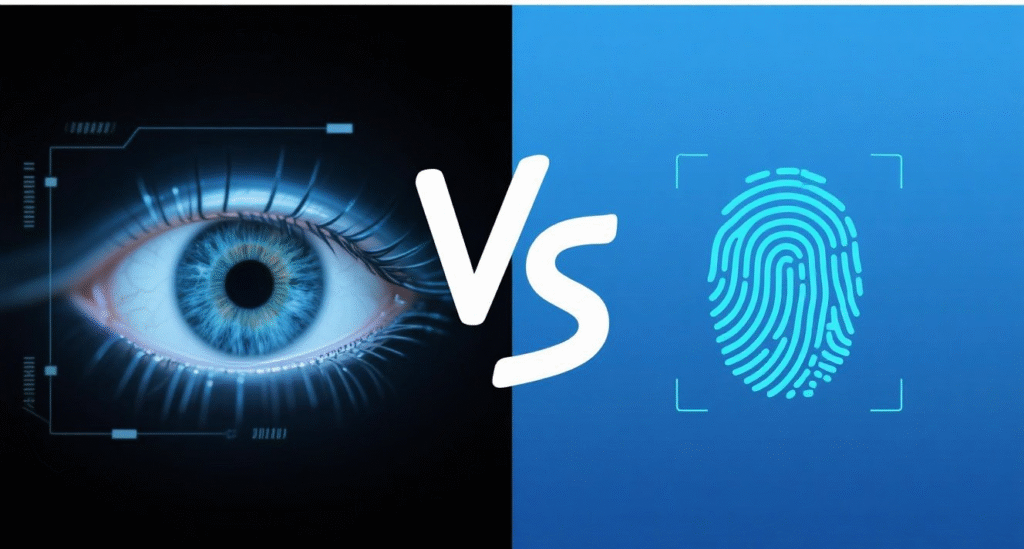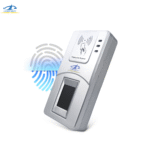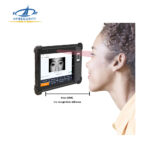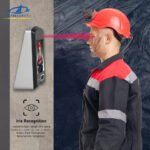As biometric technology continues to revolutionize security systems, two of the most widely used methods are nhận dạng mống mắt and fingerprint recognition. But what is the difference between iris and fingerprint biometrics? While both aim to verify identity through unique biological traits, they differ significantly in how they function, their use cases, accuracy, and security level.
This article provides a comprehensive biometric comparison of iris and fingerprint recognition to help organizations and tech professionals make informed decisions.
What is iris and fingerprint recognition
What is Iris Recognition?
Nhận dạng mống mắt is a contactless biometric identification method that uses the intricate patterns of a person’s iris—the colored part of the eye—to verify their identity. It involves capturing a high-resolution image of the iris using infrared light and converting its unique features into a biometric template.
Key Features of Iris Recognition:
Contactless and hygienic
Extremely low false acceptance rate
Difficult to forge due to the complex iris pattern
Works even in low light using infrared imaging
What is Fingerprint Recognition?
Nhận dạng vân tay is a more traditional biometric method that analyzes the ridges and valleys on a person’s fingertip. It is widely used in smartphones, time attendance systems, and access control solutions due to its simplicity and cost-effectiveness.
Key Features of Fingerprint Recognition:
Affordable and widely available
Quick capture with minimal hardware
May require physical contact
Accuracy may be affected by skin condition, dirt, or moisture
Iris vs Fingerprint: Technical Comparison
Let’s break down the difference between iris and fingerprint recognition in terms of several critical biometric performance metrics:
| Feature | Nhận dạng mống mắt | Nhận dạng vân tay |
|---|---|---|
| Contact Requirement | Contactless | Requires touch |
| Sự chính xác | Very high (FAR as low as 0.0001%) | High (FAR varies by sensor) |
| Tốc độ | Fast but may require precise positioning | Very fast and user-friendly |
| Bảo vệ | Difficult to spoof | Vulnerable to fake prints if not protected |
| Environment Resistance | Works in low light and dusty environments | May fail with dirty, wet, or damaged fingers |
| Trị giá | Higher due to specialized camera | Lower due to mass production |
This comparison highlights that iris and fingerprint technologies are designed for different use cases and environments.
Security Considerations: Which Is More Secure?
When evaluating iris vs fingerprint for security, iris recognition typically comes out ahead:
Tính độc đáo
The human iris contains over 250 unique characteristics, more than most fingerprints, and remains stable over a lifetime. Even identical twins have different irises. This makes iris recognition highly reliable for identity verification.
Spoof Resistance
Modern iris recognition systems use infrared imaging and liveness detection to ensure the eye is real and not a photo, video, or contact lens. This significantly reduces the risk of spoofing attacks.
Tamper Resistance
Unlike fingerprints that can be lifted from objects and replicated, iris patterns are internal and protected, making them much harder to capture or duplicate without consent.
Advantages of Fingerprint Recognition
Despite its vulnerabilities, fingerprint recognition remains popular due to its cost-effectiveness, ease of use, and compact hardware. Newer systems now include multi-spectral imaging and capacitive sensors to detect fake fingerprints and improve accuracy.
While both methods are valuable, iris recognition offers higher security and precision, especially where fraud prevention and identity accuracy are critical. However, fingerprint technology remains a practical choice for general-purpose applications.
Real-World Applications of Iris and Fingerprint Recognition
Nhận dạng mống mắt
Government ID programs
Airports and border control
Military and secure access zones
High-value banking systems
Nhận dạng vân tay
Consumer electronics (e.g., smartphones)
Hệ thống chấm công
Door access control
Healthcare and retail applications
The choice between iris and fingerprint depends on the specific needs of the organization—whether it prioritizes hygiene, precision, or cost-efficiency.
Phần kết luận
So, what is the difference between iris and fingerprint recognition? In essence, iris scanning offers higher security and accuracy but at a higher cost, while fingerprint scanning provides convenience and affordability for general use.
For high-security or contactless environments, nhận dạng mống mắt is the preferred choice. For widespread, everyday applications where cost matters, fingerprint recognition remains a reliable solution.
When integrating biometric systems, it’s essential to evaluate environmental conditions, user volume, security requirements, and budget.
Related products
Câu hỏi thường gặp
The key difference is the biometric trait being analyzed: nhận dạng mống mắt uses the unique patterns in the colored part of the eye, while fingerprint recognition uses the ridge patterns on a fingertip. Iris recognition is typically more accurate and secure but also more expensive.
Iris recognition is generally considered more secure due to the complexity and stability of iris patterns. It also includes advanced anti-spoofing mechanisms, such as liveness detection.
Yes. Iris recognition is contactless, making it more hygienic—especially important in medical settings or during health crises. Fingerprint recognition requires physical touch, which may raise hygiene concerns.
Absolutely. Many high-security systems use multi-modal biometric authentication, combining both iris and fingerprint to enhance security and reduce the chance of false matches.
Yes. Most modern iris scanners can accurately identify users wearing glasses or contact lenses, although very reflective lenses may slightly affect performance.
Fingerprint technology is cheaper, easier to implement, and has been around longer. It's widely adopted in smartphones, offices, and consumer applications. Iris recognition is used in more specialized or high-security fields due to its higher cost and technical requirements.
Fingerprint scanning is generally faster and more user-friendly in high-traffic environments. Iris recognition may take slightly more time due to the need for precise alignment, but newer systems are improving this significantly.
Yes. Cuts, dryness, moisture, or dirt can interfere with fingerprint recognition. Iris recognition, being contactless, is not affected by such physical conditions.
Biometric templates are usually encrypted and stored securely. However, if not properly protected, any biometric data (iris or fingerprint) could be vulnerable. That’s why robust encryption and secure storage practices are critical.
10. Which industries use iris and fingerprint recognition?
Nhận dạng mống mắt: Border control, defense, national ID programs, banking.
Nhận dạng vân tay: Smartphones, office attendance, access control, healthcare systems.








